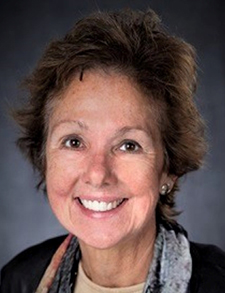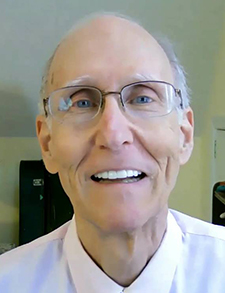
Dr. Ottolini
The first national meeting of the Pediatric Hospital Medicine Conference (PHM) was held in 2003—and the dividing line of before and after that confab couldn’t be a brighter red line in the specialty’s origin story. “Prior to that 2003, there was less of a sense of identity,” said Mary Ottolini, MD, MPH, MEd.
The PHM conference is the largest meeting of its kind for pediatric hospitalists and is sponsored jointly by the American Academy of Pediatrics (AAP), the AAP Section on Hospital Medicine, the Academic Pediatric Association, and the SHM.
The field’s past, present, and future were on full display during PHM 2023, never more so than during the opening plenary, “Celebrating the Past and Visioning the Future.” The keynote, delivered by Dr. Ottolini and Ken Roberts, MD, recounted the challenges of building a pediatric inpatient specialty from scratch and challenged attendees—and their colleagues back home—to fight the good fight for continued progress.

Dr. Roberts
When Dr. Roberts was hired to his first job in the 1970s, he was told by the doctor in charge that pediatric specialists couldn’t just be based in the hospital. The job didn’t exist, so he just did it anyway. A quarter-century later, nomenclature caught up and defined his daily workflows. Now, he can’t overstate the importance of defining a specialty for those who practice it.
“It’s critical,” said Dr. Roberts, a veteran educator and chairman emeritus at the University of North Carolina in Chapel Hill. “You can look forward to being hired and salaried to do this…it changed (the field) from being a job to being a career.”
That’s not to say the early years were easy. As is usually the case, acceptance was among the first hurdles. “There were primary care practitioners and pediatric care specialists being concerned for various reasons,” said Dr. Ottolini, a professor of pediatrics and a practicing pediatric hospitalist at The Barbara Bush Children’s Hospital at Maine Medical Center in Portland. “We had to spend a lot of time assuring primary care practitioners that we weren’t there to take away their patients…and then for the specialists, we had to work with them to make them feel this was a good thing so they could focus then on consulting.”
Turns out the arguments resonated pretty quickly. “It turned out to be an accelerator as the primary care doctors recognized they could spend more time in the office, financially do better, and have their patients cared for full time by people in the hospital,” Dr. Roberts said.
Advancements in electronic health records, a growing research presence, and the birth of fellowships all coincided with the specialty’s evolution. Annual meetings grew every year, from roughly 125 people back in 2003 to some 1,800 attendees before the COVID-19 pandemic. Paramount to the specialty’s next 20 years of growth is working to address inherent inequities in the way pediatric hospitalists are reimbursed for their care delivery.
The field’s “reimbursement, especially since the majority of children are on federal insurance or Medicaid…is significantly different than for adult inpatient medicine” Dr. Ottolini said. “Until that changes, it will never be economically advantageous to care for children in the hospital. You see more and more smaller hospitals losing their pediatric units.”
Vaccinating children against respiratory syncytial virus (RSV), genetically engineering biologicals for chronic diseases, telemedicine or hospital-at-home for children with medical complexity, and artificial intelligence are just a few of the issues that cloud the future.
Dr. Roberts says that pediatric hospitalists are positioned to lead the care of hospitalized children in an age of increasing complexity.
“There needs to be a way of coordinating all these various efforts,” he said. “As these smaller places close and the larger children’s hospitals are consolidating the care of these children, the work of talking with the primary care doctor, having any understanding of what the community resources are, becomes much more difficult. With hospitalists already under the gun to maximize revenue—which is the equivalent of time—they will have that opportunity.”
That’s a good thing, in Dr. Ottolini’s eyes. “With the talented group of hospitalists that we have now, the future is bright,” she said. But it’s not going to look the same way as it does in 2023 in 2033. “They need to keep their eye on opportunities to manage population, both inside and outside the hospital.”
Dr. Roberts, quoting Johns Hopkins Medicine’s Eric Biondi, says the current spate of challenges has the specialty poised to take the next steps.
“We need to be like water, filling in all the cracks on the pavement,” Dr. Roberts said. “We’ve gotten this far on the backs of the elders of pediatric hospital medicine…now, it’s the next phase, it’s the younger people coming up and what their vision is going to be.
“I’m hoping the vision is to work with subspecialists, surgeons, community agencies, and hospital administrators to make this better for children and families. It isn’t inevitable that it will go that way, but I’m optimistic that young people will take that challenge.”
PHM 2024 will be held in Minneapolis from July 31 to August 4, 2024.
Richard Quinn is a freelance writer in New Jersey.